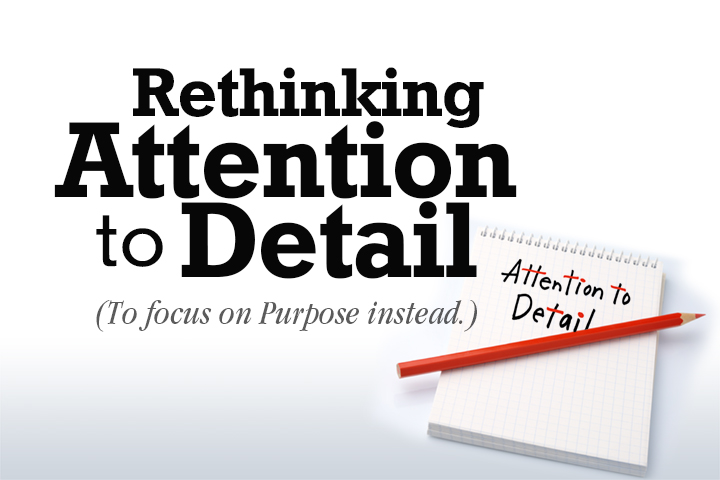Rethinking Attention to Detail
Aug 20, 2019 | Posted by etc

It’s back to school, and almost every teacher across the country will go to great lengths to develop keen observational superpowers in every student. Attention to detail can turn anyone into a superhero.
We can hardly imagine a scenario or a job description where attention to detail is not required. I’d like to believe that I possess a good deal of this coveted stuff as a designer.
But the ability to be observant alone is not enough.
Our ancient ancestors knew that their very survival depended on their ability to remain queued into their environment. But beyond keenly observant, they needed to be keenly observant about the right things. They developed an acute ability to filter out the things that were important from things that were not.
Today, we are not so inclined. We are so addicted to distraction that we are losing our ability to even discern the difference between important and unimportant. We rarely take the time to take a good hard look at anything, let alone differentiate between the two. Because of this, we miss the big picture.
#Squirrel!

I am not as observant as I want to be, but I am comforted by knowing I am not alone. It only takes something like this draw the bicycle test , or the selective attention test to show us that we could be more observant.
Or, take this exemplary description of a simple square by Mr. @John McWade for example:
“A square has four straight sides of equal length, four angles of 90 degrees, four angles of 270 degrees (the outsides), and four corners. Its center is equidistant from every corner, and from the center of every side. A square is bisected by vertical, horizontal, and crisscrossing 45-degree axes. Because your eye follows lines, the sides of a square move your eye side to side and up and down. Its corners–outward-pointing arrows–carry your eye away from its center equally in all directions. A square has straight sides, so it lines up with other straight objects, (like the page it’s on), and forms rectangles in the spaces between them. Its corners point at things. A square rotated 45 degrees is still a square, but no longer a square; it’s now a diamond, and relative to the horizon; it’s triangular.” John McWade
I have been looking at squares since my earliest days on the planet. But it takes a definition like this one to show me that I have yet to really see one.
Entrepreneurs are no different from a normal human being in ability to focus. But the more our economic environment shifts, and the more fractured our focus and attention become, the more critical it is to be observant about the right things. We must guard against any distraction that will pull us further away from our Ultimate Purpose.
And there you have it. Purpose. Purpose informs everything. Focus on anything else, and you are bound to miss your goal.
• You can focus on stats. But the information cannot tell you if it is worth collecting in the first place.
• Focus on the fancy tool, and you will choose the wrong one for the job every time.
• Focus on trends, and you’ll connect the wrong dots to the future. (“Everyone else is doing it” is the worst reason to do anything.)
• Focus on the numbers, and they will deliver correlation, but not causation.
• Focus on industry standards, and you’ll fail to innovate.
• Focus on the step by step instructions to success, and you’ll focus on your own goals rather than the goals of your customer. It’s about their success, not yours.
• Focus on what you want to see, and you will fail to see the unexpected, or worse yet–fail to see what is really there.
• Focus on the AI, and you will miss the relationship. It is impossible that something devoid of humanity will ever help us connect with humanity.
• Focus only on the destination, and you’ll miss the joy in the journey.
Without Purpose, you will spend most of your time chasing rabbits down some rabbit hole.
Focus on your Purpose, and Purpose will help you find the way, make the way, and achieve your goals.





